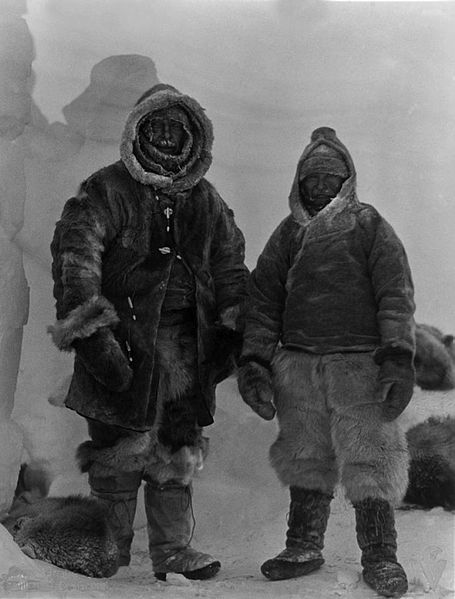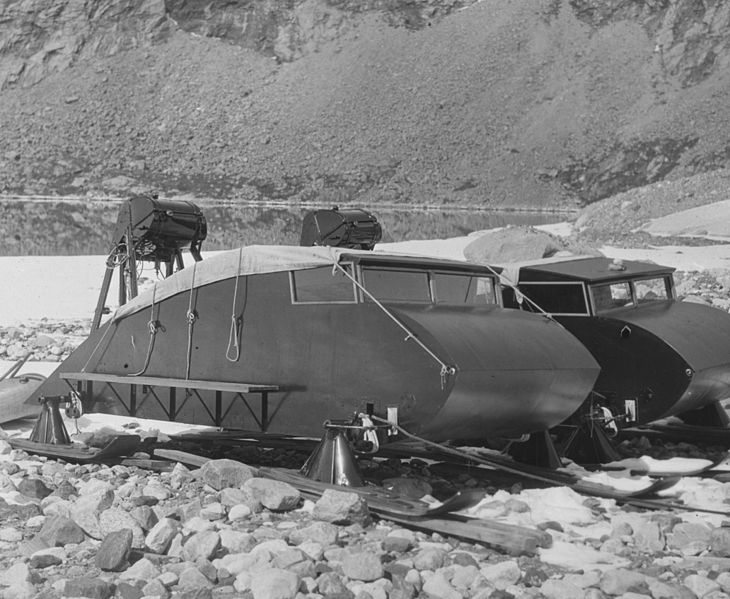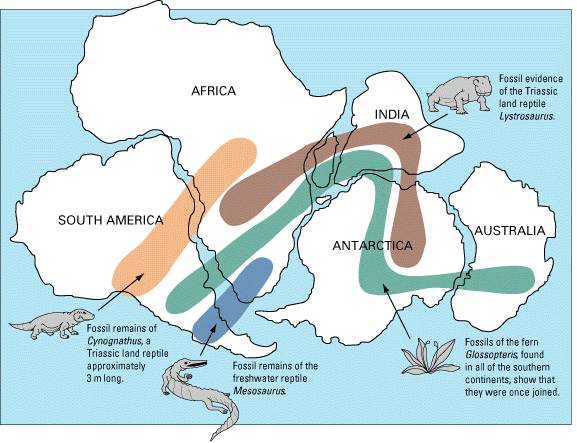<Back to Index>
- Geophysicist and Meteorologist Alfred Lothar Wegener, 1880
PAGE SPONSOR
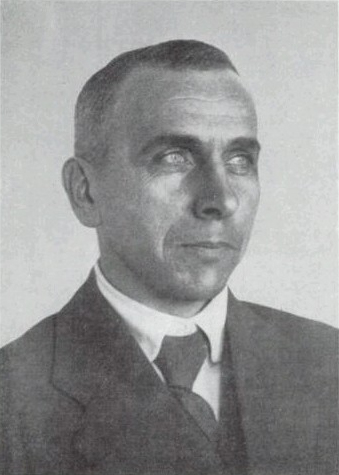
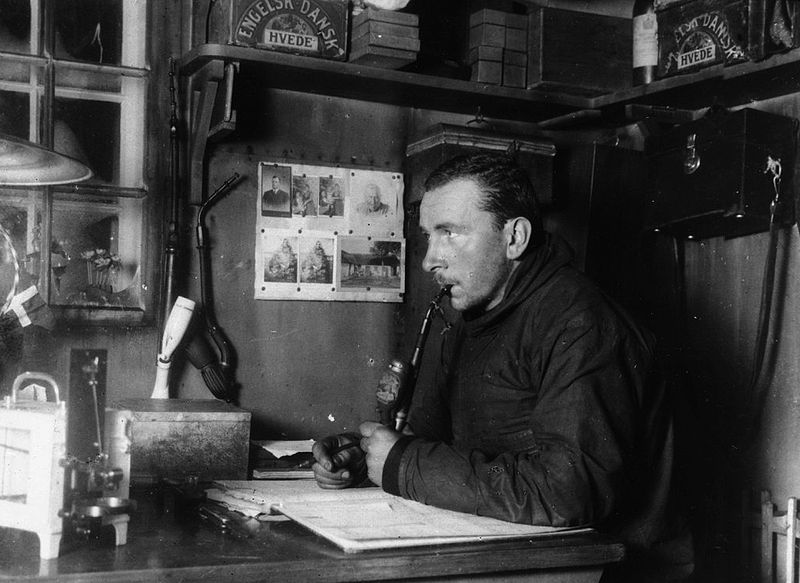
Alfred Lothar Wegener (November 1, 1880 – November 1930) was a German scientist, geophysicist and meteorologist.
He is most notable for proposing continental drift (Kontinentalverschiebung) in 1912, which hypothesized that the continents were slowly drifting around the Earth. However, his hypothesis was not widely accepted until the 1950s, when numerous discoveries such as palaeomagnetism provided strong support support for continental drift.
On November 1, 1880, Alfred Wegener was born in Berlin during the time of the German Empire.
Wegener attended the Köllnische Gymnasium in his home town. After he had finished school he studied physics, astronomy and meteorology at the Friedrich Wilhelms University (today Humboldt University), Berlin. In 1905, he was admitted to the degree of Ph.D. in astronomy under the direction of Julius Bauschinger. Wegener had always maintained a strong interest in the developing fields of meteorology and climatology and his studies afterwards focused on these disciplines. He was a record holding balloonist (flying a balloon continuously for 52 hours) and pioneered the use of weather balloons to track air masses. The written basis of his lectures, The Thermodynamics of the Atmosphere, became a standard textbook in meteorology. Wegener was involved in several expeditions to Greenland to study polar air circulation before the existence of the jet stream was accepted. He and J.P. Koch were the first to winter on the inland ice in northeast Greenland. Inside the hut they drilled to a depth of 25 m with an auger.
Wegener's last expedition was to Greenland in 1930, to conduct the first 12 month monitoring of arctic weather. Wegener felt responsible for the expedition's success, as the German government had contributed $120,000 ($1.5 million in 2007 dollars) at a time when Germans were starving to death owing to post war shortages. Success depended on enough provisions being transferred from West camp to Eismitte ("mid - ice") for two men to winter there and this was a factor in the decision that led to his death. Owing to a late thaw, the expedition was six weeks behind schedule and, as summer ended, the men at Eismitte sent a message that they had insufficient fuel and so would return on October 20.
On September 24, although the route markers were by now largely buried
under snow, Wegener set out with thirteen Greenlanders and his
meteorologist Fritz Loewe to supply the camp by dog sled. During the
journey the temperature reached −60 °C (−76 °F)
and Loewe's toes became so frostbitten they had to be amputated with a
penknife without anesthetic. Twelve of the Greenlanders returned to West
camp. On October 19, the remaining three members of the expedition reached Eismitte. There being only enough supplies for three at Eismitte,
Wegener and Rasmus Villumsen took two dog sleds and made for West camp.
They took no food for the dogs and killed them one by one to feed the
rest until they could run only one sled. While Villumsen rode the sled,
Wegener had to use skis. They never reached the camp.
Six months later, on May 12, 1931, Wegener's body was found halfway between Eismitte
and West camp. It had been buried (by Villumsen) with great care and a
pair of skis marked the grave site. Wegener had been fifty years of age
and a heavy smoker and it was believed that he had died of heart failure
brought on by overexertion. His body was reburied in the same spot by
the team that found him and the grave was marked with a large cross.
After burying Wegener, Villumsen had resumed his journey to West camp
but was never seen again. He was twenty three when he died and it is
estimated that this body now lies under more than 100 metres (330 ft) of
accumulated ice and snow.
Alfred Wegener first thought of the idea of continental drift by noticing that the different
large landmasses of the Earth almost fit together like a jigsaw. The Continental shelf
of the Americas fit closely to Africa and Europe, and Antarctica,
Australia, India and Madagascar fit next to the tip of Southern Africa.
But Wegener only took action after reading a paper in Autumn 1911 and
seeing that a flooded land - bridge contradicts isostasy.
Wegener's main interest was meteorology, and he wanted to join the
Denmark - Greenland expedition scheduled for mid 1912. So he hurried up to
present his Continental Drift hypothesis on January 6, 1912. He
analyzed either side of the Atlantic Ocean for rock type, geological
structures and fossils. He noticed that there was a significant
similarity between matching sides of the continents, especially in fossil plants. His hypothesis was thus strongly supported by the physical evidence, and was a pioneering attempt at a rational explanation.
From 1912, Wegener publicly advocated the theory of "continental drift", arguing that all the continents were once joined together in a single landmass and have drifted apart. He supposed the cause might be the centrifugal force of the Earth's rotation ("Polflucht") or the astronomical precession. Wegener also speculated on sea floor spreading and the role of the mid - ocean ridges, stating: the Mid - Atlantic Ridge ... zone in which the floor of the Atlantic, as it keeps spreading, is continuously tearing open and making space for fresh, relatively fluid and hot sima [rising] from depth. However, he did not pursue these ideas in his later works.
In 1915, in The Origin of Continents and Oceans (Die Entstehung der Kontinente und Ozeane), Wegener published the theory that there had once been a giant continent, he named "Urkontinent" (German word meaning "origin of the continents", in a way equivalent to the Greek "Pangaea",
meaning "All - Lands" or "All - Earth") and drew together evidence from
various fields. Expanded editions during the 1920s presented the
accumulating evidence. The last edition, just before his untimely death,
revealed the significant observation that shallower oceans were
geologically younger.
In his work, Wegener presented a large amount of very strong evidence in support of continental drift, but the mechanism remained elusive. While his ideas attracted a few early supporters such as Alexander Du Toit from South Africa and Arthur Holmes in England, the hypothesis was generally met with skepticism from largely conservative scientists, who were resistant to any change in the status quo. The one American edition of Wegener's work, published in 1925, was received so poorly that the American Association of Petroleum Geologists organized a symposium specifically in opposition to the continental drift hypothesis. Its opponents could argue, as did the Leipziger geologist Franz Kossmat, that the oceanic crust was too "firm" for the continents to "simply plough through", a suggestion which ignored the plasticity of all rocks at depth and at high temperatures and pressures. The comment also ignored the vast time scale over which continental drift has occurred, effectively the total age of the earth of about 4.5 billion years.
In 1943 George Gaylord Simpson
wrote a vehement attack on the theory (as well as the rival theory of
sunken land bridges) and put forward his own permanentist views. Alexander du Toit wrote a rejoinder in the following year,
but G.G. Simpson's influence was so powerful that even in countries
previously sympathetic towards continental drift, like Australia, Wegener's hypothesis fell out of favor.
In the early 1950s, the new science of paleomagnetism pioneered at Cambridge University by S.K. Runcorn and at Imperial College by P.M.S. Blackett was soon producing data in favor of Wegener's theory. By early 1953 samples taken from India showed that the country had previously been in the Southern hemisphere as predicted by Wegener. By 1959, the theory had enough supporting data that minds were starting to change, particularly in the United Kingdom where, in 1964, the Royal Society held a symposium on the subject.
Additionally, the 1960s saw several developments in geology, notably the discoveries of seafloor spreading and Wadati - Benioff zones, led to the rapid resurrection of the continental drift hypothesis and its direct descendant, the theory of plate tectonics. Alfred Wegener was quickly recognized as the founding father of one of the major scientific revolutions of the 20th century.
With the advent of the Global Positioning System (GPS), it became possible to measure continental drift directly.
The Alfred Wegener Institute for Polar and Marine Research in Bremerhaven, Germany, was established in 1980 on his centenary. It awards the Wegener Medal in his name. The crater Wegener on the Moon and the crater Wegener on Mars, as well as the asteroid 29227 Wegener and the peninsula where he died in Greenland (Wegener Peninsula near Ummannaq), are named after him.
The European Geosciences Union
sponsors an Alfred Wegener Medal & Honorary Membership "for
scientists who have achieved exceptional international standing in
atmospheric, hydrological or ocean sciences, defined in their widest
senses, for their merit and their scientific achievements."
